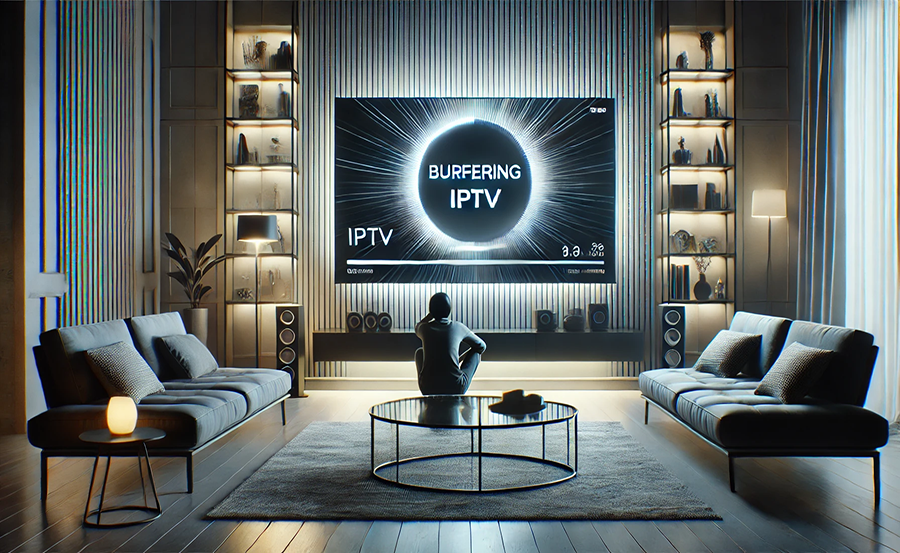With the increasing demand for high-quality streaming, IPTV services have gained immense popularity. However, buffering issues can tarnish the experience, leading to frustration for many users. In this article, we’ll explore the intricacies of buffering in IPTV services, its causes, and how to solve it—all while paving the way for a smoother streaming journey.
Buy 1 Year IPTV Subscription and Enjoy Unlimited Content
What is IPTV Buffering?
Buffering occurs when there is a delay in data transfer, causing interruptions in video streaming. In IPTV (Internet Protocol Television), this means moments of freeze or lag, affecting the seamless viewing experience. Buffering can be likened to the TV equivalent of waiting for a webpage to load—it’s inconvenient and can disrupt the flow of whatever you’re watching. Understanding buffering becomes crucial for both IPTV providers and users aiming for superior viewing.
Underlying Causes of Buffering
Buffering issues stem from a variety of sources. Often, the delay is due to insufficient bandwidth, congested networks, or inefficient data delivery mechanisms. Knowing the underlying cause is key for implementing effective solutions. Let’s look at these elements in more detail:
Bandwidth Limitations
Bandwidth is the amount of data that can be transmitted in a given time frame. When multiple devices are connected to a single network, the available bandwidth is divided among them, potentially causing buffering during streaming. Upgrading to a higher bandwidth plan often mitigates this issue.
Network Congestion
During peak hours, network traffic spikes, leading to congestion. This congestion can slow down data transfer rates resulting in buffering. It’s akin to rush hour traffic—no matter how well-constructed a road is, it can only handle so many cars at a time.
Technical Solutions to IPTV Buffering
Addressing buffering isn’t merely about upgrading your internet plan; it’s about optimizing the entire streaming ecosystem. Here, we outline some technical adjustments that can substantially decrease buffering times:
Enhancing Your Network
Improving network hardware and configurations can lead to substantial reductions in buffering. This includes upgrading your router, ensuring better placement, and reducing interference. It’s important to note that while these solutions require an initial investment, they yield clear long-term benefits.
Router Placement and Settings
For optimal performance, place your router in a central location, away from obstructions. Implementing Quality of Service (QoS) settings will prioritize IPTV traffic, minimizing delays and maximizing the bandwidth available for streaming.
Opt for Wired Connections
Whenever possible, use Ethernet cables instead of relying on wireless connections. Wired connections offer more stability and faster speeds, effectively reducing buffering.
Software and Tools
Various software tools can enhance IPTV streaming by optimizing network settings. Some of these tools offer real-time monitoring of bandwidth and signal strength, allowing users to make informed adjustments.
Selecting the Right IPTV Provider
Choosing the right IPTV provider can drastically impact your viewing quality. While many services promise superior PX, only a few deliver on this promise consistently. Understanding what to look for when choosing becomes critical.
Assessing Reliable Services
Finding a trustworthy IPTV provider begins with researching and comparing available services. Look beyond marketing buzzwords and focus on user reviews and independent evaluations. Reliable services typically offer affordable IPTV options without compromising on quality.
Checking Service Uptime and Support
Service reliability is often reflected in uptime statistics and customer support responsiveness. Ensure that the provider has a track record of minimal downtime and offers robust customer service, ready to address any buffering issues promptly.
Evaluating Content Selection
An extensive range of channels doesn’t always translate to quality. Ensure that the IPTV provider offers the best IPTV channels that match your viewing preferences. A well-rounded selection should include both local and international offerings to cater to varied tastes.
User Practices for Seamless Streaming
Even with the best infrastructure in place, user habits play a role in buffering experiences. By adopting responsible streaming practices, users can enhance their viewing experience, ensuring smooth transitions and minimal interruptions.
Regular Device Maintenance
Smart devices and TVs require periodic maintenance to ensure optimum performance. This includes updating firmware, clearing caches, and occasionally rebooting devices to prevent software glitches that contribute to buffering.
Managing Concurrent Streams
Limit the number of simultaneous streams within the household. This ensures that bandwidth is not overstretched, allowing each device adequate space to operate without hindrance.
The Future of IPTV: Advancements and Innovations
As technology evolves, so will IPTV services, shifting towards higher efficiency and enhanced user experiences. The future holds significant promise for battling buffering through innovations in streaming technology.
Introducing Better Compression Techniques
Technological advancements in compression techniques continue to make significant strides. These advancements promise reduced data requirements without compromising video quality, effectively minimizing buffering.
Higher Internet Speeds Becoming the Norm
With the rollout of 5G networks and other high-speed internet solutions, users can expect a considerable enhancement in their IPTV experiences. These innovations will support higher data loads, limiting buffering issues significantly.
A New Perspective on Streaming
Buffering may have been a bane in the realm of IPTV services, but tackling it doesn’t solely rest on technology. Users play an equally vital role in overcoming these challenges. By staying informed and adapting to innovations, a new era of interruption-free IPTV streaming is on the horizon.
FAQs About IPTV Buffering

What are the common causes of IPTV buffering?Common causes include insufficient bandwidth, network congestion, inadequate service from the provider, and even user habits such as having too many devices connected simultaneously.
How can upgrading my internet package help reduce buffering?Upgrading your internet package increases available bandwidth, accommodating more data flow. This is especially helpful if multiple users or devices are on the same network.
Are there specific hardware recommendations to reduce buffering in IPTV?Consider upgrading to a modern router, using Ethernet connections instead of WiFi, and implementing QoS settings to prioritize IPTV traffic.
Can IPTV service providers guarantee zero buffering?No provider can absolutely guarantee zero buffering at all times due to external factors like network congestion or device limitations, but reputable providers minimize these issues significantly.
How does streaming during peak hours affect buffering?Peak hours lead to increased network congestion, slowing data transfer rates and often resulting in more frequent buffering occurrences.
How to Enable and Use Catch-Up TV Features for Hassle-Free Viewing





